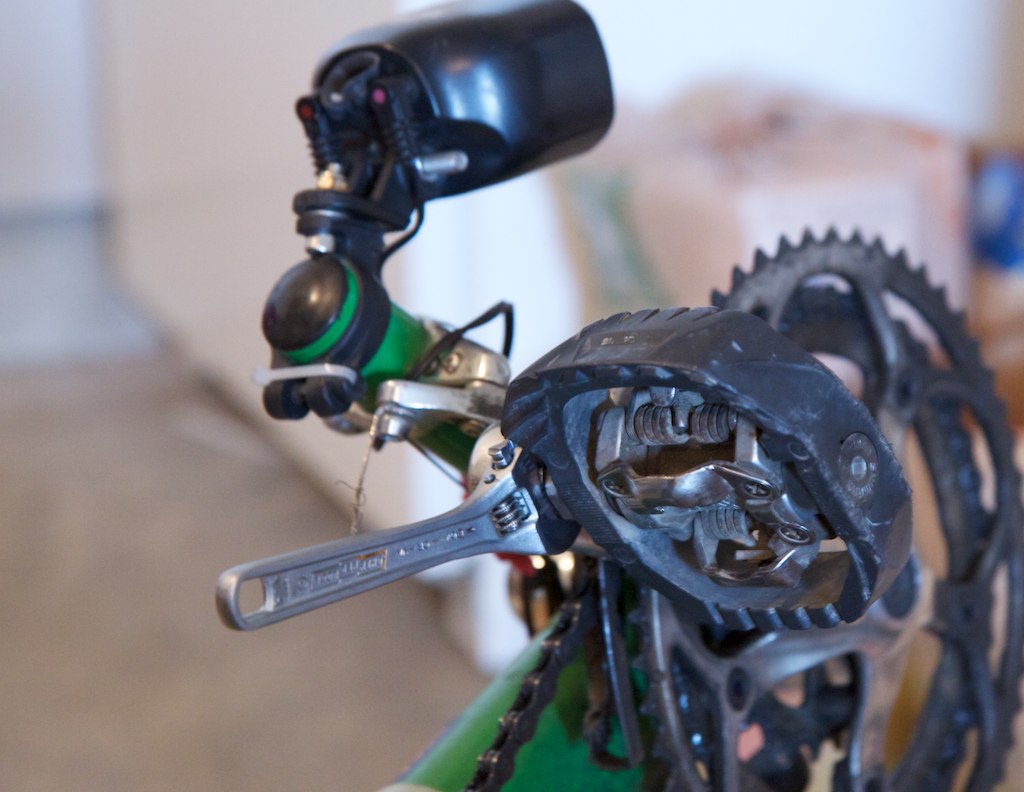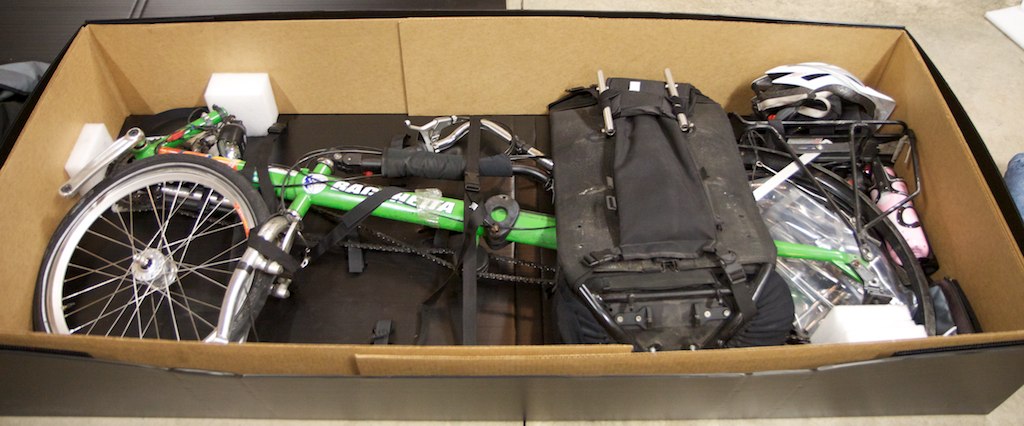December 13, 2011
by TheCuriousCyclist
Filed under Advice, Tech
Tagged with toledo
First things first: The recumbent was awesome!
I would not use any other style of bike for such a long trip. I never had to worry about saddle sores, or aching wrists, or a kink in my neck. My wind profile was nice and low, and my luggage capacity was high.
My decision to leave behind my tent was a good one, since there were almost no places to camp along the way. I suppose I could have asked strangers if I could camp in their yard or on their farmland, but as a lone traveler on a long haul with some expensive gear, I didn’t feel comfortable enough. With two people sharing a tent the variables are different, I’m sure.
Other changes I would make: New gloves. My ski gloves didn’t block moisture, and that was a problem. I also needed some kind of waterproof over-sock, so I didn’t have to use plastic shopping bags. I used the bags even when it was dry out, to reduce windchill. I know there are waterproof covers for biking shoes, but I don’t like them for three reasons: First, they’d get beat up whenever I walk around off the bike. Second, they all have a hole in the bottom to expose the pedal clip, and on this recumbent, the soles of my feet go vertical during each pedal stroke. After half an hour of cycling into a rainstorm, the liners would fill with water. And third, I can’t find any in my size. Bah! So that’s still an unsolved problem.
My water sack had a slow leak, so I couldn’t use it for this trip. I kept all my water in metal canteens instead. They didn’t seem to add much weight, and they could attach to the outsides of the bike. I never worried about dropping or puncturing them.
Toolkit:
The toolkit was great. I used the needle-nose pliers to remove thorns from my tires, pull my brake cables, cut zipties, loosen the valves on my tubes, and manipulate the wiring on my hub generator. I used the miniature wrench to adjust my headlamp, and attach and remove my rack, seat, tail light, and pedals. It would have been almost impossible to disassemble the bike without those.
The plastic tire levers saved me a lot of trouble. I used a bunch of the zipties, and almost all of the chain oil. I used the hex keys, of course. I had a swiss army knife, and I used the knife, bottle opener, screwdriver, scissors, and saw (to cut a hat brim to extend my helmet). I used the tire pump a dozen times – totally worth it. (A spare tire is useless if you can’t get it inflated, right?) My set of folding scissors turned out to be completely frivolous. Those are out. I didn’t use the electrical tape, but I’m strangely reluctant to discard it. To my relief I didn’t need any of the spare parts (screws, washers, chain link, brake pads), or the tire repair kit, or my medical kit – but I’m keeping all those. I should probably add a chain tool, and a spare 20-inch tire to go with the tube.
Tech toys:
The laptop was very helpful in the evenings. It was powerful enough to deal with my photos, and the physical keyboard was great for my logs and correspondence. I researched my route on it from hotel rooms, with maps and weather reports and topography and restaurant menus all open in the web browser. The extra USB ports charged my gadgets at night. Doing all this stuff with a tablet – the iPad even – would have been much harder. It doesn’t have the horsepower, and even with a detachable keyboard, there is basically no concept of “keyboard navigation”, which would drive me bananas.
In fact, I should have left the iPad at home. The only time it was uniquely useful on the trip was when I wanted to look at a map, and AT&T didn’t get a signal to my phone, but Verizon got a signal to the iPad. That’s it. Sure it made a good conversation piece and it was fun to watch The Daily Show on it in restaurants, but that didn’t make it worth the weight. Next time it’s staying home.
I brought that Contour GPS camera along for the entire ride, but never turned it on once. It was just too easy to use the iPhone for taking video, and I knew that if I dug out the Contour I would have to wait at least 30 seconds for it to get a GPS lock. Then there would be the effort of importing, cropping, and transcoding the video… Next time I’ll just leave that thing at home.
All my gadgets stayed dry, thanks to those waterproof “lok-saks”, and an overabundance of sandwich bags. I could have used another dry-sack for dirty laundry, instead of just cramming it straight into the pannier.





